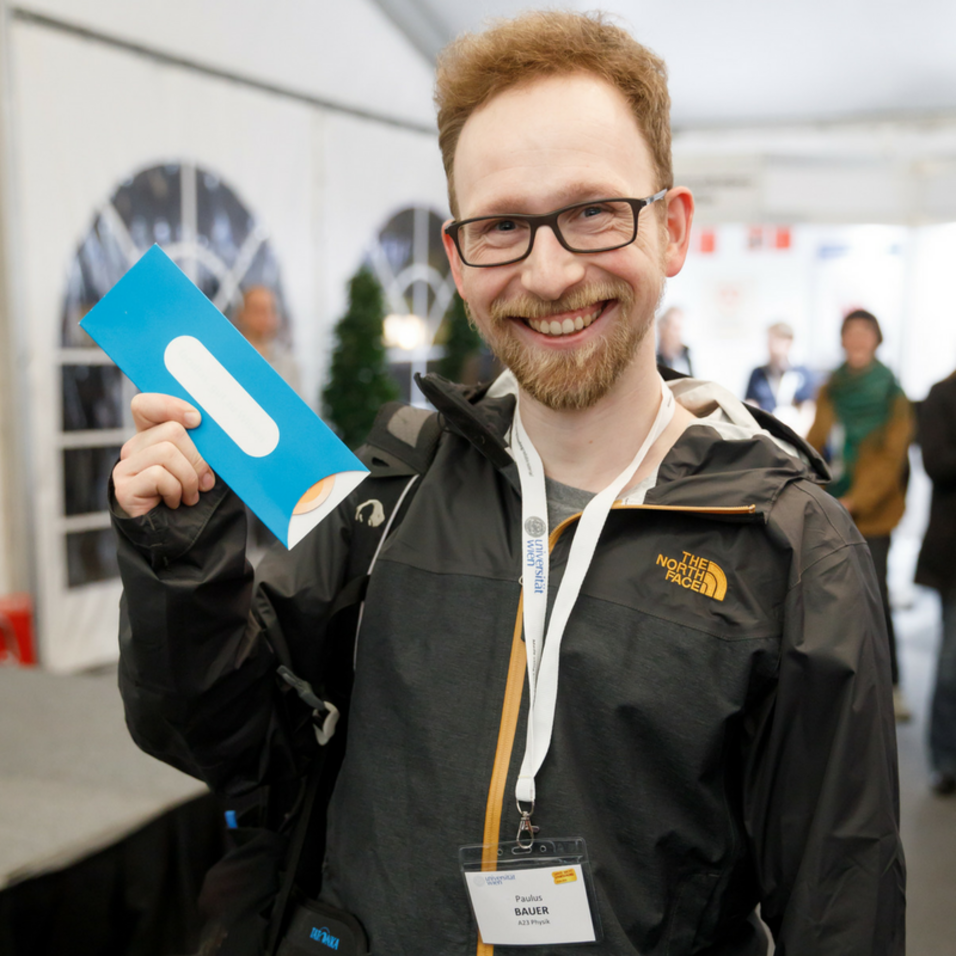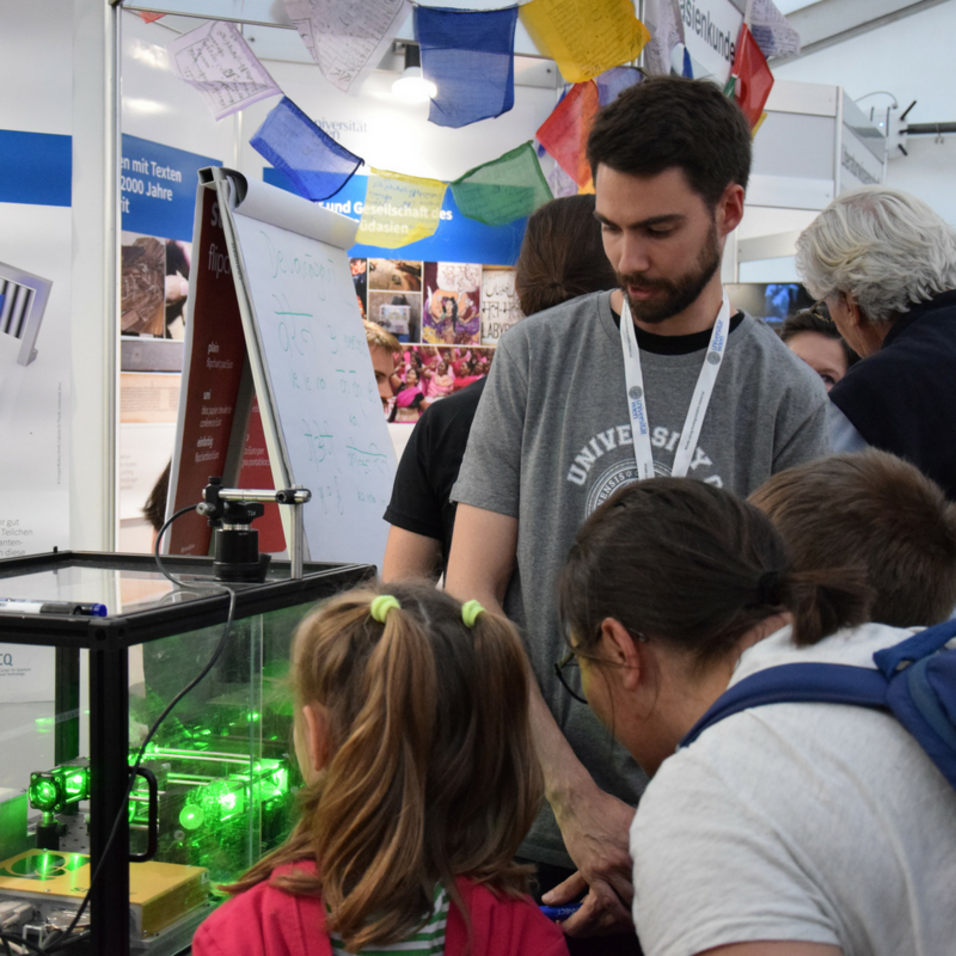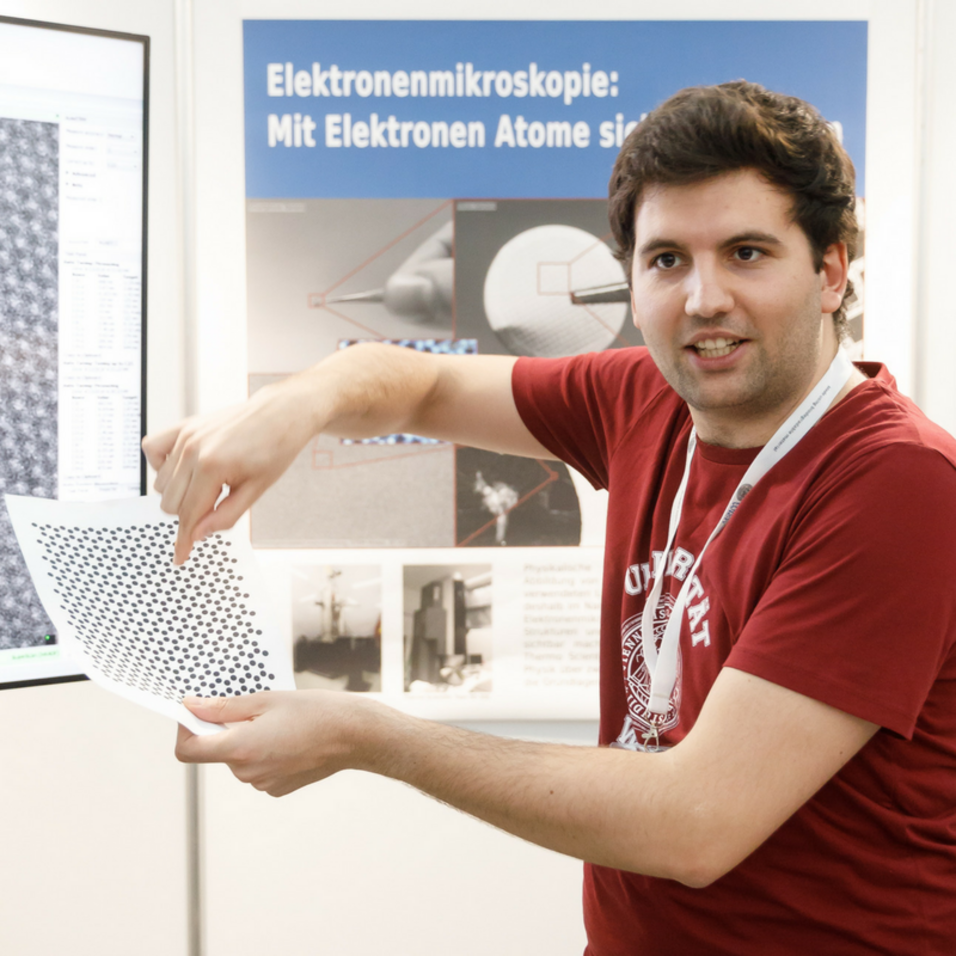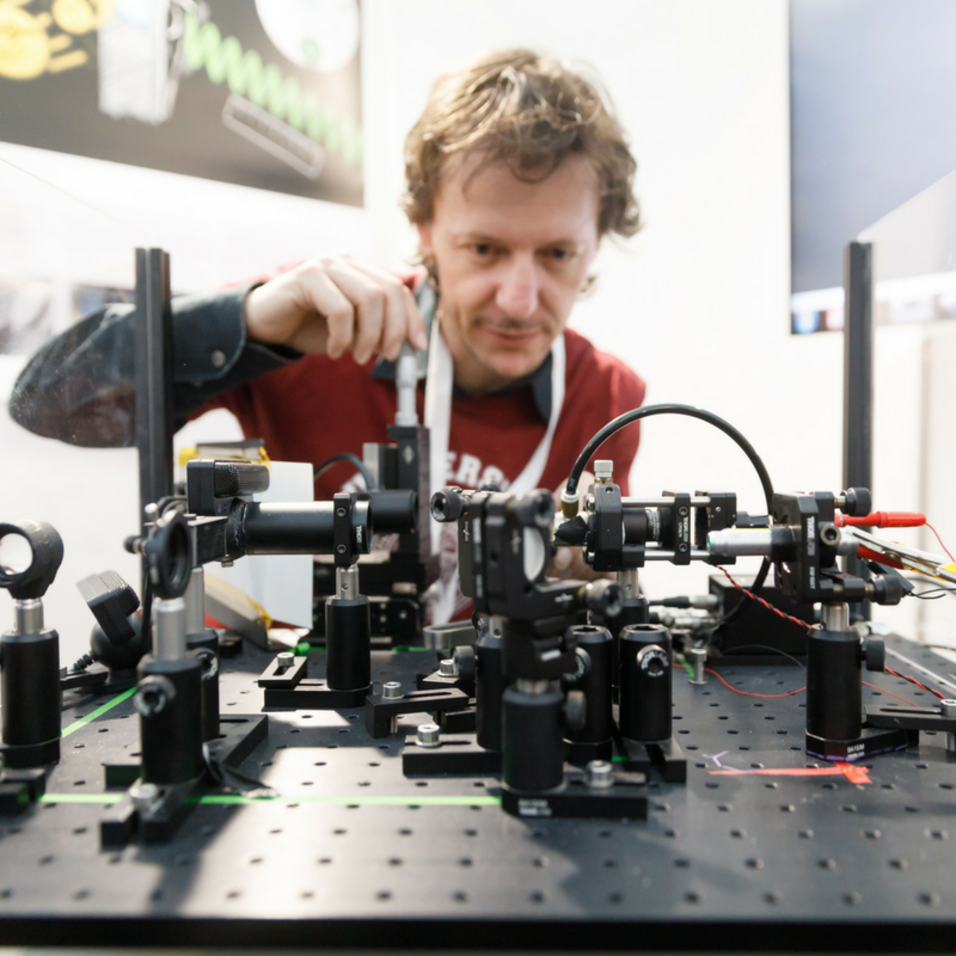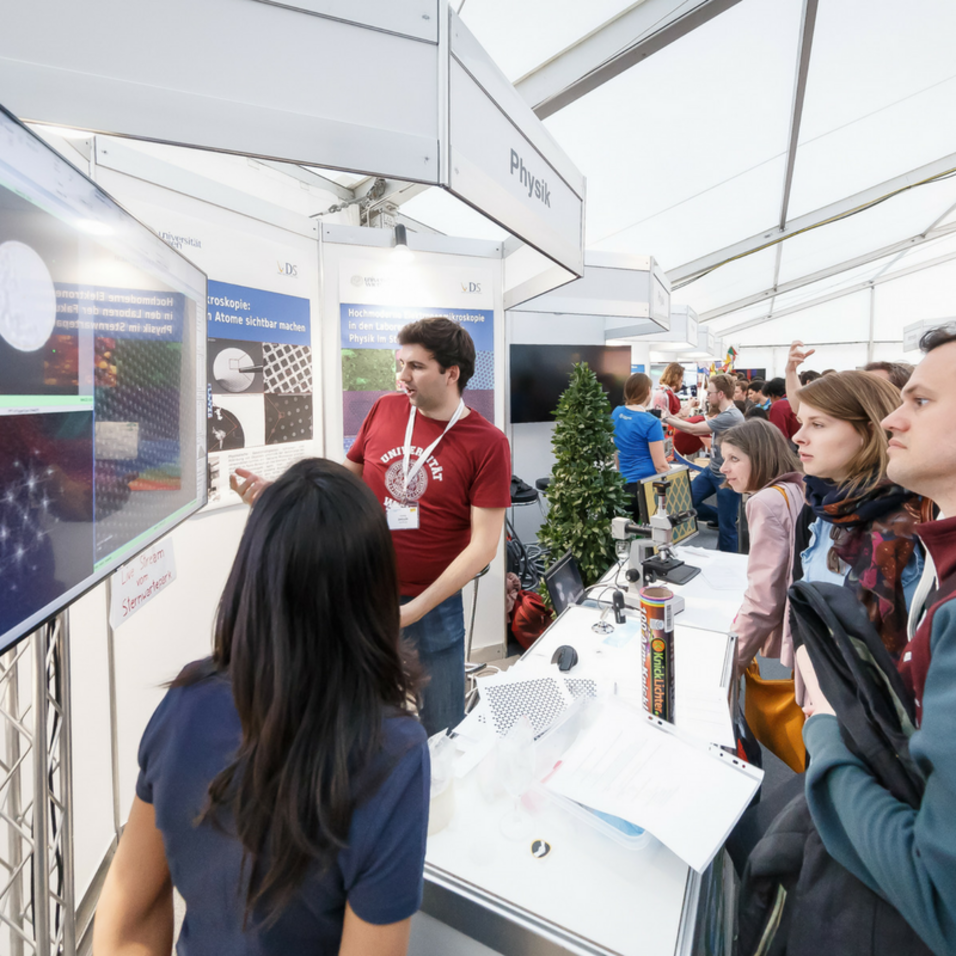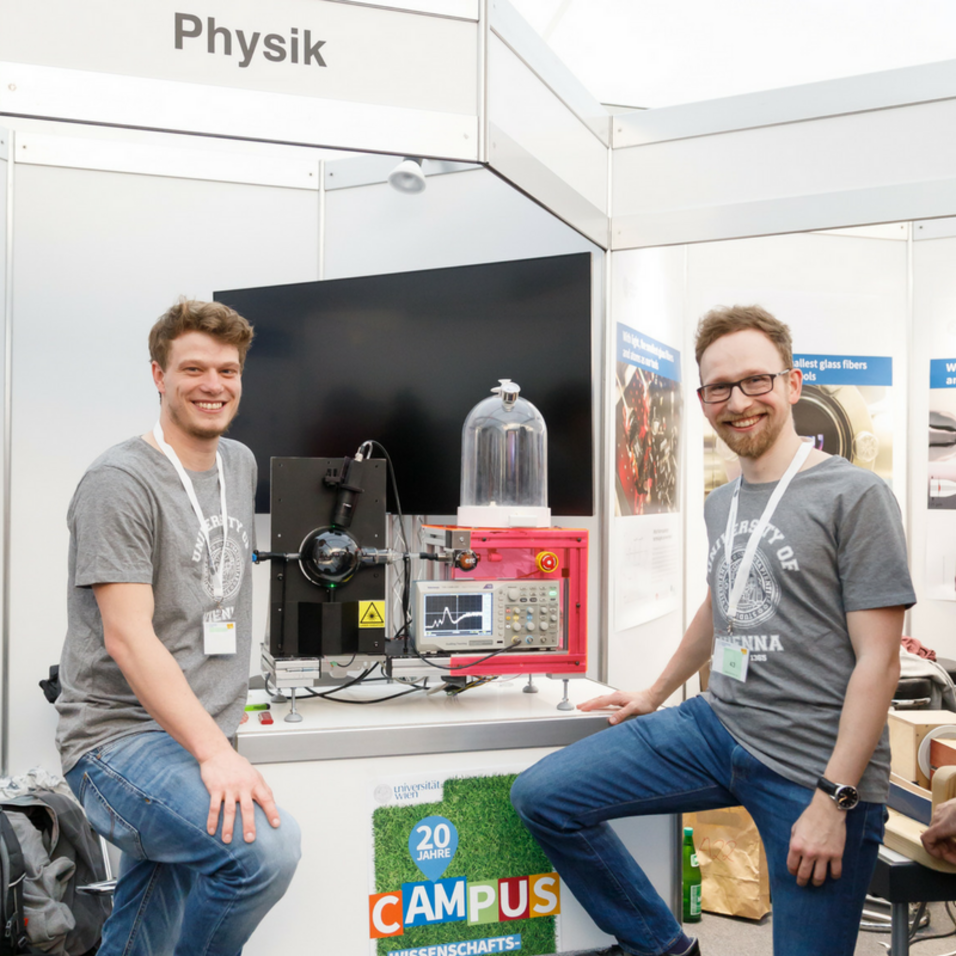The Long Night of Research (Lange Nacht der Forschung - LNF) is the only nationwide science communication event that makes the services of local institutions accessible to the general public. It is also the largest Research event in Austria made possible every two years by several Austrian government ministries.
The VDS-P fellows presented the following projects:
- Small particles, big impact
Aerosol nanoparticles have a big impact on the atmosphere and the formation of clouds. Therefore, we investigate these small particles in the dissertations of the research group Aerosol and Environmental Physics (Ass. Prof. Dr. Paul Winkler). We study how aerosols form and grow in the atmosphere; on the one hand directly in the environment, on the other hand in a controlled experiment (CLOUD at CERN) or with novel detection methods (SAXS). We want to demonstrate the great effect of these small particles by means of a simple cloud chamber (DemoSANC). - Photoluminescence
In the research group Electronic Material Properties (Prof. Dr. Thomas Pichler & Associate Professor Dr. Paola Ayala), spectroscopic investigations are the most important methods for the characterization of new materials. Of particular importance is the measurement of photoluminescence, by means of which much essential information about the material e.g. can be obtained via carbon nanotubes. At the LNF2018 the students explained photoluminescence by means of small experiments as an example and illustrate the difference between fluorescence and phosphorescence. In addition, they showed chemiluminescence by means of glow sticks. - Modern electron microscopy
Modern electron microscopy makes it possible to see individual atoms in nanomaterials. The research group Physics of Nanostructured Materials (Assoz. Prof. Dr. Jani Kotakoski) investigates their exact atomic arrangement and its controlled change. In the LNF2018, the group enabled visitors to create two-dimensional materials, examine them with optical microscopes and an interactive live-transmitted experiment with an electron microscope, where atoms are visible. - Topology
Topology is not only a fascinating field in mathematics, but also shows very interesting phenomena in biology and materials science. As part of the research group Computational Physics (Univ.-Prof., Dipl.-Ing., Dr. Christos Likos), the visitors at the LNF2018 were introduced to the world of topology with tangible examples and their influence on the behavior of polymers in the flow demonstrate. - Sounds of Matter
"Sounds of Matter" is a FWF-funded science communication project whose goal is to discover new creative ways to showcase scientific ideas through music. Seven research teams at the Faculty of Physics of the University of Vienna and more than 30 composers from all over the world have participated to date. PhD students from the field of material physics and Computational Physics have presented their research in this project from an artistic perspective.

